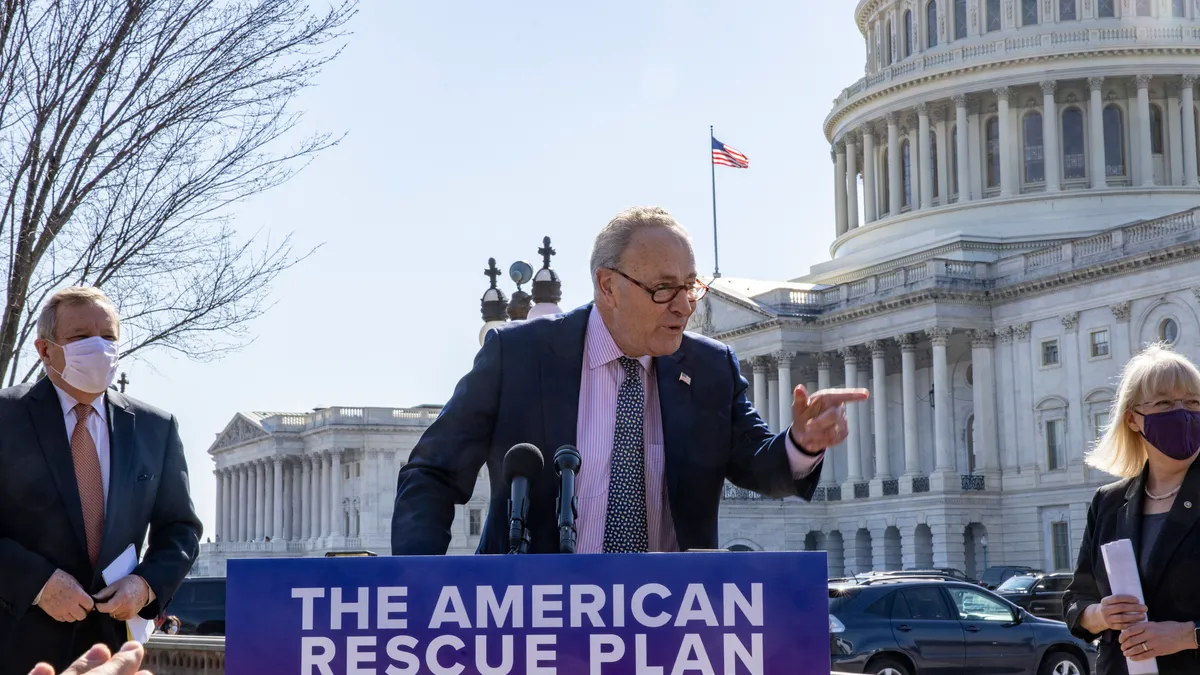Dive Brief:
-
American Rescue Plan expenditures by 329 large city and county governments totaled nearly $19 billion as of September 2022, according to a report by researchers at the Brookings Institution, the National League of Cities and the National Association of Counties, with 55% of that going to government operations.
-
That $19 billion is 29% of the act’s $65 billion in state and local fiscal recovery funds, or SLFRF, Congress allocated to those governments to support their recovery from the COVID-19 public health emergency, according to the researchers’ analysis of data from the Treasury Department.
-
After government operations — which include fiscal health recovery, employee wages and investments in facilities and equipment — the largest spending targets to date have been public health (11%), public safety (9%) and community aid (8%). But spending on those and other priorities showed regional differences, the researchers reported.
Dive Insight
Local governments can allocate and spend the additional funds at their discretion to ensure they can best meet the needs of their community. This has led to regional variation in budget priorities, the report states.
SLFRF spending priorities vary by region
Priorities also varied considerably across specific sub-categories such as homelessness, water and sewer infrastructure, and neighborhood revitalization. Cities and counties in the West dedicated almost 8% of SLFRF dollars allocated to date to address homelessness — more than double the percentage other regions allocated for that use. Likewise, local governments in the South used nearly 8% of their SLFRF dollars to date on water and sewer infrastructure, again more than double the percentage that other regions spent on those needs.
“Local officials may see these funds as a unique opportunity to maintain and expand those systems in response to the rapid influx of population to southern localities,” the report said.
Midwestern cities and counties used more than 2% of their SLFRF funds allocated to date for neighborhood revitalization, which is over eight times the share earmarked for that purpose to date in the Northeast, South or West.
“Neighborhood revitalization was a much higher priority in Midwest cities and counties, many of which are using SLFRF dollars to address depopulation, blight, concentrated poverty and racial segregation,” the report said.












